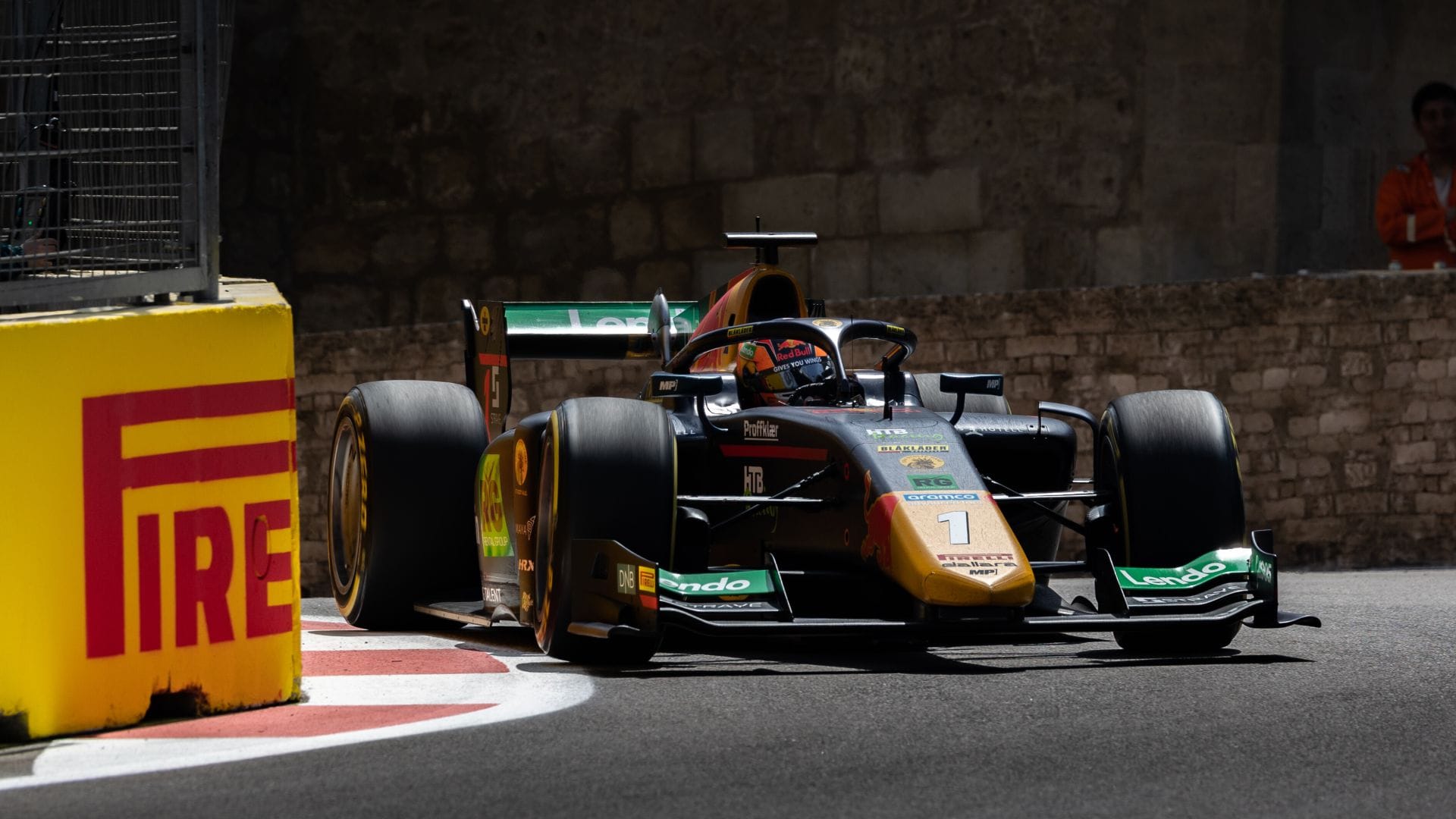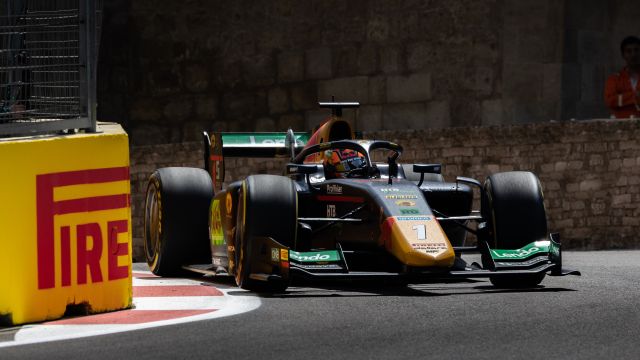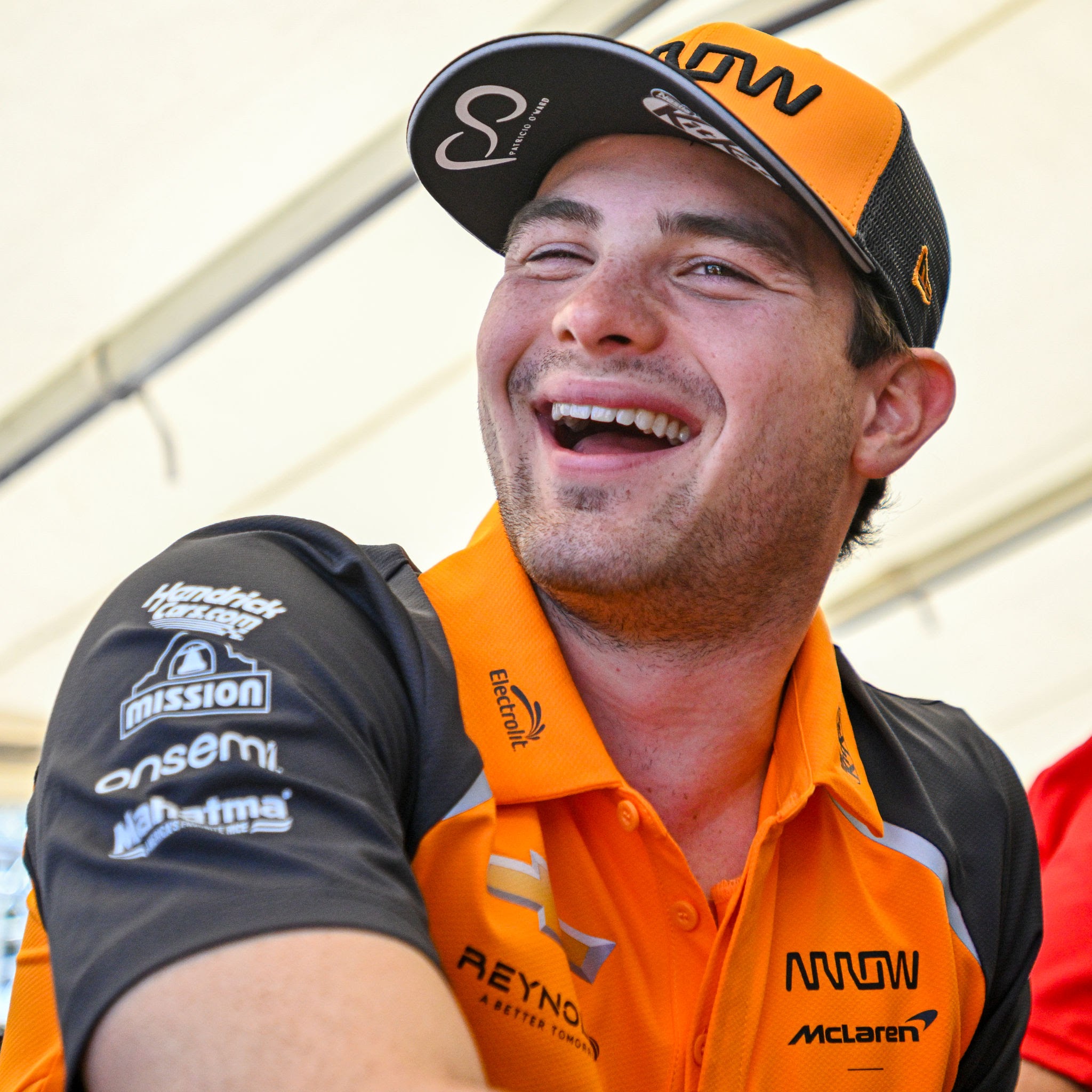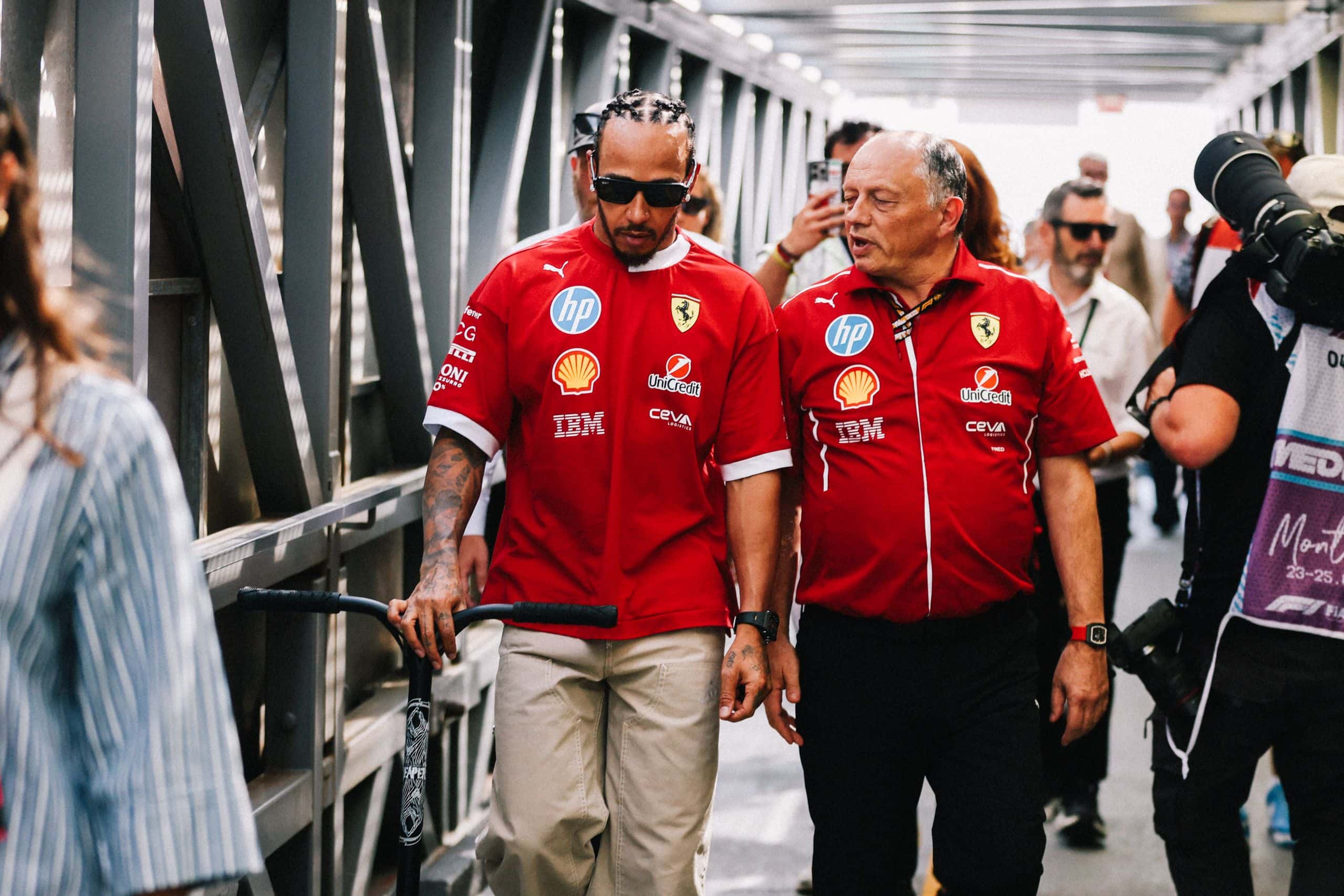What Makes A Formula 2 Car?


Formula 2 is a racing championship that has been a stepping stone for young drivers aspiring to reach Formula 1. The cars used in Formula 2 are significantly different to Formula 1 cars, yet they still provide a thrilling racing experience. These cars are designed to be aerodynamic, lightweight, and fast.
The engine of a Formula 2 car is a V6 – 3.4 litre single turbo charged Mecachrome engine. It is rated to 620 HP @ 8750 rpm and has a fly by wire accelerator system. The engine is rebuilt after 8000 km. The cars are equipped with a 6-speed sequential gearbox, rear-wheel drive, and front-wheel steering. They have a fuel capacity of 125 litres and sophisticated electronic systems and suspension. The overall weight of the car is 755 kg, including the driver.
Formula 2 cars use Pirelli tyres that come in four dry compounds: red soft, yellow medium, white hard, and purple supersoft (abolished after 2019). They also have two wet compounds: green intermediate and blue wet. The tyres are designed to provide maximum grip and durability during the race. The cars are equipped with a variety of safety features, including a roll hoop camera and a fire extinguisher system. In this article, we will take a closer look at what makes a Formula 2 car and what sets it apart from other racing cars.
Overview of Formula 2
Formula 2 (F2) is a single-seater racing category that serves as a feeder series to Formula 1. The FIA Formula 2 Championship is the current iteration of the series, which was introduced in 2017 following the rebranding of the long-term Formula One feeder series GP2. The championship is held on racing circuits and is organised by the Fédération Internationale de l’Automobile (FIA).
Chassis
The F2 cars use a Dallara F2 2018 chassis, which is a carbon-fibre monocoque with a length of 5,005 mm, width of 1,800 mm, and height of 950 mm. The car has a minimum weight of 755 kg, including the driver. The chassis is designed to meet the latest FIA safety standards, which include the use of a Titanium Halo head protection system, anti-intrusion panels, and the HANS device.
Engines
The current F2 cars are powered by a 3.4-litre turbocharged V6 engine that produces approximately 620 horsepower. The engines are supplied by Mecachrome, a French company that has been the exclusive engine supplier for the series since 2018. The engines are designed to be reliable, cost-effective, and to provide a good balance between performance and drivability.
Tyres
The F2 cars use Pirelli tyres, which are designed to provide good grip, durability, and consistency over the course of a race weekend. The tyres are slick and do not have any grooves or treads. The tyres are supplied in two compounds – soft and hard – and the teams are required to use both compounds during a race weekend.
Overall, Formula 2 provides an excellent platform for young drivers to develop their skills and gain experience in single-seater racing. The series is highly competitive and attracts talented drivers from around the world. With its high-speed thrills and intense rivalries, Formula 2 is an exciting and entertaining spectacle that is enjoyed by fans of all ages.
Technical Aspects of Formula 2
Aerodynamics
Aerodynamics is an essential aspect of Formula 2 racing. The car’s design is such that it generates a significant amount of downforce, which helps it to maintain high speeds around corners. The front wing and rear wing of the car are adjustable, allowing the driver to fine-tune the downforce levels to suit the track conditions.
Downforce
Downforce is the force that pushes the car down onto the track, increasing its grip and stability. Formula 2 cars generate a maximum downforce of approximately 3,000 Newtons. This downforce is critical when racing on high-speed tracks like Monza, where the car needs to maintain its speed through the corners.
Drag Reduction System
The Drag Reduction System (DRS) is a feature that allows the driver to reduce the drag on the car’s rear wing, increasing its top speed. The system can only be used in designated DRS zones during the race, and it is disabled during practice sessions and when the safety car or virtual safety car is deployed.
Sequential Gearbox
Formula 2 cars are equipped with a six-speed sequential gearbox that allows the driver to shift gears quickly and smoothly. The gearbox is operated using paddles mounted on the steering wheel, and it is designed to handle the high torque generated by the car’s engine.
Gasoline Direct Injection
Formula 2 cars use a 3.4-liter V6 engine with gasoline direct injection. The engine is rated to produce 620 horsepower at 8,750 RPM and is capable of propelling the car to a top speed of approximately 200 mph. The engine is also equipped with a rev limiter to prevent it from exceeding the maximum allowed RPM.
Kinetic Energy Recovery System
The Kinetic Energy Recovery System (KERS) is a feature that allows the car to recover energy under braking and store it in a battery. The stored energy can then be used to provide a power boost to the car during acceleration. Formula 2 cars are not equipped with KERS, unlike their Formula 1 counterparts.
In conclusion, Formula 2 cars are designed to be fast, efficient, and safe. They are equipped with state-of-the-art technology, including aerodynamic features, a sequential gearbox, and a powerful engine, to provide drivers with the ultimate racing experience.
Notable Formula 2 Drivers
Formula 2 has been a breeding ground for some of the most talented drivers in motorsports. Many drivers have used the series as a stepping stone to reach the pinnacle of motorsports, Formula 1. Here are a few notable drivers who have made a name for themselves in Formula 2.
George Russell
George Russell is a British racing driver who won the Formula 2 championship in 2018. He made his Formula 1 debut in 2019 with the Williams team. Russell’s success in Formula 2 caught the attention of Mercedes, and he was signed as a junior driver for the team. He has been touted as a future world champion and is expected to have a bright future in Formula 1.
Lando Norris
Lando Norris is a British racing driver who finished runner-up in the 2018 Formula 2 championship. He made his Formula 1 debut in 2019 with the McLaren team. Norris has impressed with his speed and maturity, and he is widely regarded as one of the most promising young drivers in Formula 1.
Alex Albon
Alex Albon is a Thai-British racing driver who finished third in the 2018 Formula 2 championship. He made his Formula 1 debut in 2019 with the Toro Rosso team. Albon was promoted to Red Bull Racing mid-season and although he lost his seat, he returned to F1 in 2022 with the Williams team.
These drivers have shown that success in Formula 2 can lead to a successful career in Formula 1. With the right talent and determination, drivers can use the series as a platform to showcase their skills and reach the top of motorsports.
Formula 2 vs. Other Racing Series
Formula 1
Formula 2 and Formula 1 are both open-wheel racing series, but there are some differences between them. Formula 1 is the highest level of single-seater racing, and it features the most advanced technology, fastest lap times, and highest speeds. Formula 1 cars are significantly faster and more powerful than Formula 2 cars, with engines producing over 900 horsepower. The cars are also much lighter, weighing around 740kg, and they have more advanced aerodynamics, which allows them to corner at much higher speeds.
IndyCar Series
IndyCar is another open-wheel racing series, but it is primarily based in the United States. Like Formula 2, IndyCar features a mix of street circuits, road courses, and ovals, but the cars are different. IndyCar cars are larger and heavier than Formula 2 cars, weighing around 725kg, and they have less advanced aerodynamics. However, they are still incredibly fast, with engines producing around 700 horsepower.
Formula 3 Championship
Formula 3 is a step below Formula 2, and it is designed to be a stepping stone for young drivers looking to make their way up the motorsport ladder. Formula 3 cars are less powerful than Formula 2 cars, with engines producing around 380 horsepower, and they are also lighter, weighing around 625kg. The cars are also less aerodynamically advanced than Formula 2 cars, which makes them slower through corners.
Formula 4
Formula 4 is the entry-level category of single-seater racing, and it is designed for young drivers who are just starting out in motorsport. Formula 4 cars are much less powerful than Formula 2 cars, with engines producing around 160 horsepower, and they are also much lighter, weighing around 570kg. The cars are also much less aerodynamically advanced than Formula 2 cars, which makes them slower through corners.
In terms of technology, Formula 2 cars are less advanced than Formula 1 cars, but they still feature a range of cutting-edge technologies, including Pirelli tires, which are designed to provide maximum grip and durability. Formula 2 cars are also incredibly fast, with acceleration from 0-100 km/h in around 2.8 seconds. The cars are also larger than Formula 1 cars, with a length of around 5 meters and a width of around 2 meters.
The Formula 2 racing season runs from April to November, and the series is considered to be a professional racing series, with drivers competing for prize money and championship titles. However, the series is also open to amateur drivers, who can compete on a race-by-race basis. Overall, Formula 2 is a highly competitive racing series that provides a platform for young drivers to showcase their talents and progress up the motorsport ladder.
What Makes A Formula 2 Car? – Key Takeaways
In conclusion, the Formula 2 car is an impressive machine that showcases the best of modern engineering and technology. It is designed to provide a thrilling experience for both drivers and spectators, with its powerful engine, aerodynamic design, and advanced safety features.
For spectators, the Formula 2 race is a thrilling spectacle that combines speed, skill, and strategy. The competition is intense, with drivers pushing themselves and their cars to the limit in pursuit of victory. Whether watching from the stands or on TV, fans can enjoy the excitement of the race and the skill of the drivers.
The racing format of Formula 2 is designed to be both challenging and exciting. With a mix of sprint and feature races, drivers must balance speed and strategy to come out on top. The addition of the Monaco race adds an extra layer of excitement and difficulty, as drivers navigate the tight streets of the principality.
The Formula 2 car is designed to perform at its best on a variety of race tracks. With its powerful engine and advanced suspension system, it can handle high-speed tracks with ease, while its aerodynamic design allows for optimal performance on tighter, more technical circuits.
Overall, the Formula 2 car is an impressive machine that showcases the best of modern engineering and technology. From its powerful engine to its advanced safety features, it is designed to provide a thrilling experience for both drivers and spectators alike.





